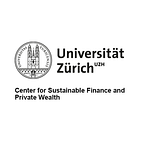As Sustainable Finance Is (Still) Failing, We Need to Ensure that it Fails Forward
by Prof. Dr. Falko Paetzold
Sustainable finance as a toolbox can be pivotal in getting us out of the ongoing sustainability crisis. But only if we put the tools in order and learn how to use them right.
Imagine a boxing ring. On one side of that ring is a growing and energetic community of entrepreneurs, activists, researchers, and investors. They are pushing human ingenuity in order to realize sustainable development. Their goal is clear: the actions of current generations are not to compromise the opportunities of future generations.
On the other side of the ring is a very small band of — let’s face it — older men. They oversee a huge, highly effective machine delaying action on climate change and the conservation of biodiversity. The repercussions of their actions and inactions might have them go down in history as the biggest killers of all time.
The first camp, the good guys, is gaining ground as displayed by the recent push in green policy promises. But the latter camp has been winning for decades, colorfully illustrated by ever more grotesque-looking future CO2-reduction curves and lists of endangered species.
We don’t know how this will turn out. History will tell. I firmly believe that Sustainable Finance can help win the fight for sustainability — but we are not there yet. Here is how and why.
From Exclusion to Impact
Following the age of Sustainable Finance 1.0 defined by exclusion criteria, we entered the era of Sustainable Finance 2.0 in the ‘90s focused on ESG-data. This was then followed by the rise of Sustainable Finance 3.0, now focused on real-world impact. The fact that sustainable finance has arrived to the mainstream is applaudable. So is the new emphasis on impact. But two existential barriers block the meaningful advancement of sustainable development:
- Hesitant intermediaries and poor data limit investors’ interest in sustainable solutions. This has been shown in our research on private banks and advisors (Sustainable Investing Capabilities of Private Banks report & Impact Investing: Mapping Families’ Interests & Activities report), and on the challenges in providing investors with consistent ESG ratings (Aggregate Confusion) and information on physical climate risks (Let’s Get Physical). With advisors severely under-trained, intermediaries do not fulfil their role in informing investors about sustainability or impact. Lacking standardization and questions regarding the validity of data hinder the establishment of trust, the critical foundation of any investment decision. We need to sharpen our tools to get anywhere.
- Actors on all levels confuse the purpose of the four sustainable investing strategies. If you want to have positive impact, then you need to be honest about the mechanisms of impact. We identify and explore these mechanisms in our papers and reports (Can Sustainable Investing Save the World & The Investors’ Guide to Impact). Example mechanisms include investing in brown companies and making them less brown through voting and engagement or backing impact-driven start-ups where your capital is highly additional. Having impact requires understanding the different approaches of impact. In other words: seeing sustainable finance as the toolbox that it ultimately is. Unfortunately, clear and concerning indicators underscore that this is not happening. In a recent piece published on USA Today, a former sustainable investing expert lamented that there remain plenty of ESG funds with core holdings in pollution-heavy stocks — the antithesis of ESG investing. This is BS. What an ESG fund does is that in every industry, including oil & gas, companies that do reasonably well at reporting on their CO2 emissions, board composition, etc, are included in portfolios. If you don’t want oil & gas, then you need an exclusion screen. If you want to change the oil & gas sector, get an ESG activist fund, or an impact fund.
As simple as it sounds, greenwashing is now accompanied by impact-washing as proven by the case of DekaBank being sued for its impact claims. All this is sure to drive swathes of laymen away from sustainable finance for years to come. And to top it off, the European Commission might prohibit funds from being labeled “sustainable” or “impact” if they do not apply exclusion screens and instead focus only on active ownership. This could massively limit the impact potential of sustainable finance.
As society, we have powerful levers to win the fight for sustainable development. We can do this! If we fail, we need to fail forward and learn rapidly. Our team is here to help you make sense of sustainable finance, its key questions, and its potential.
Prof. Dr. Falko Paetzold is the Initiator & Managing Director of CSP, Assistant Professor in Social Finance at EBS University (Oestrich-Winkel)
This article was originally shared as a part of CSP’s Media Bulletin. If you are a member of the press interested in receiving the latest research updates, opinion pieces, and news stories from the Center for Sustainable Finance and Private Wealth, contact Anna Tervahartiala at anna.tervahartiala@bf.uzh.ch to subscribe.
